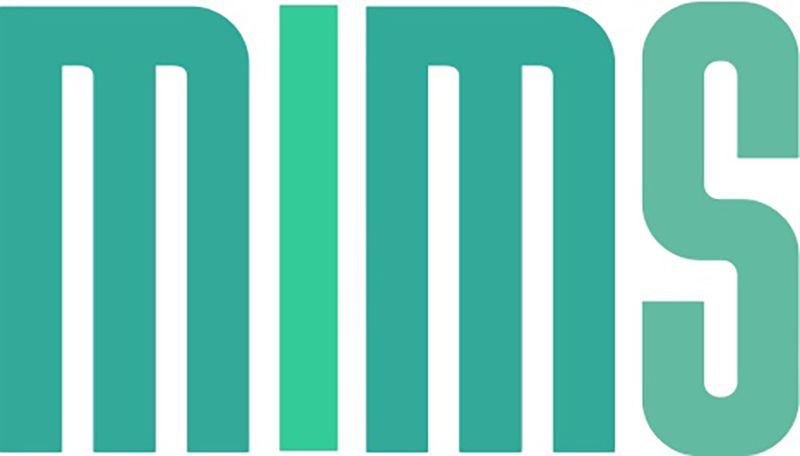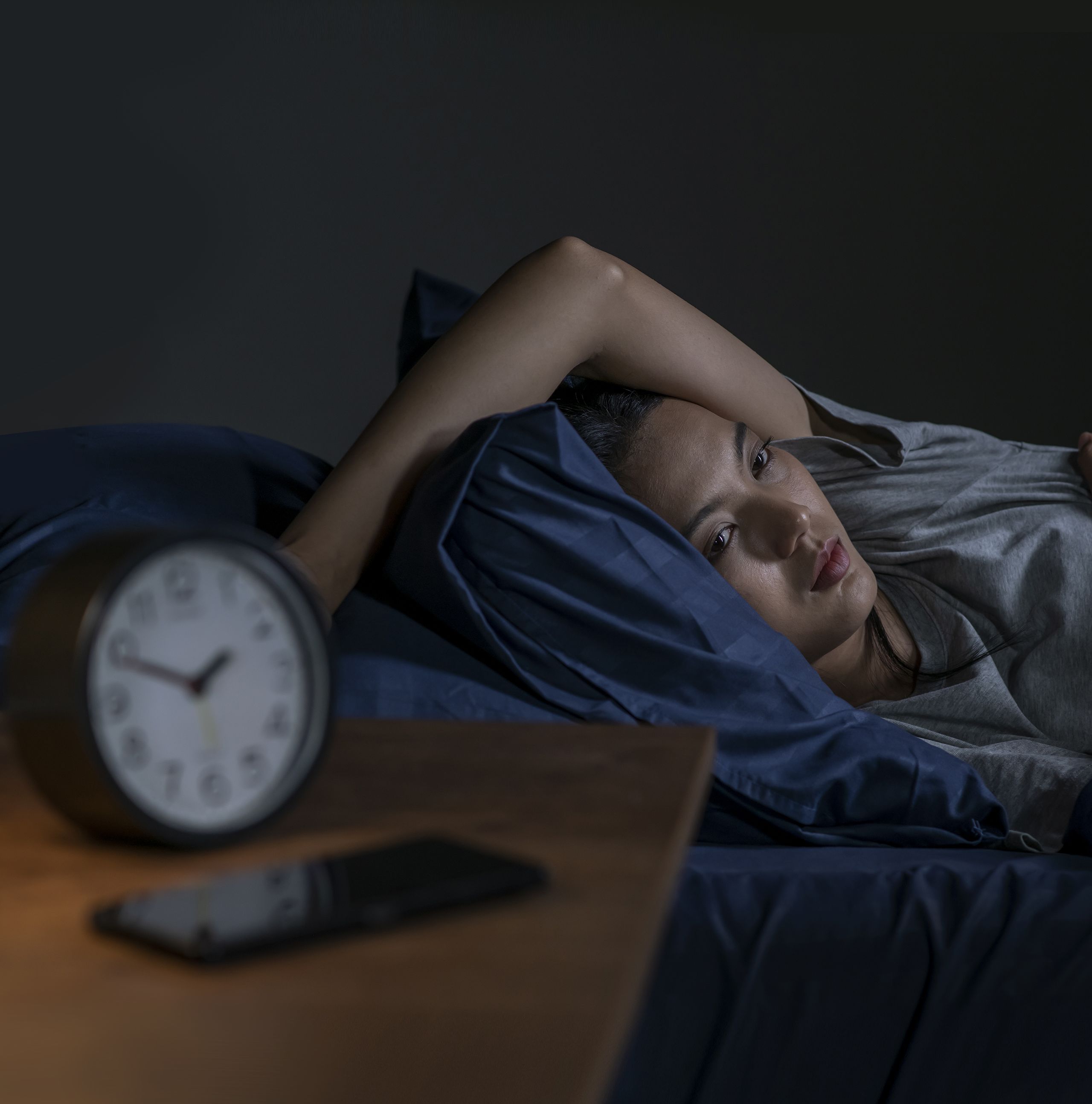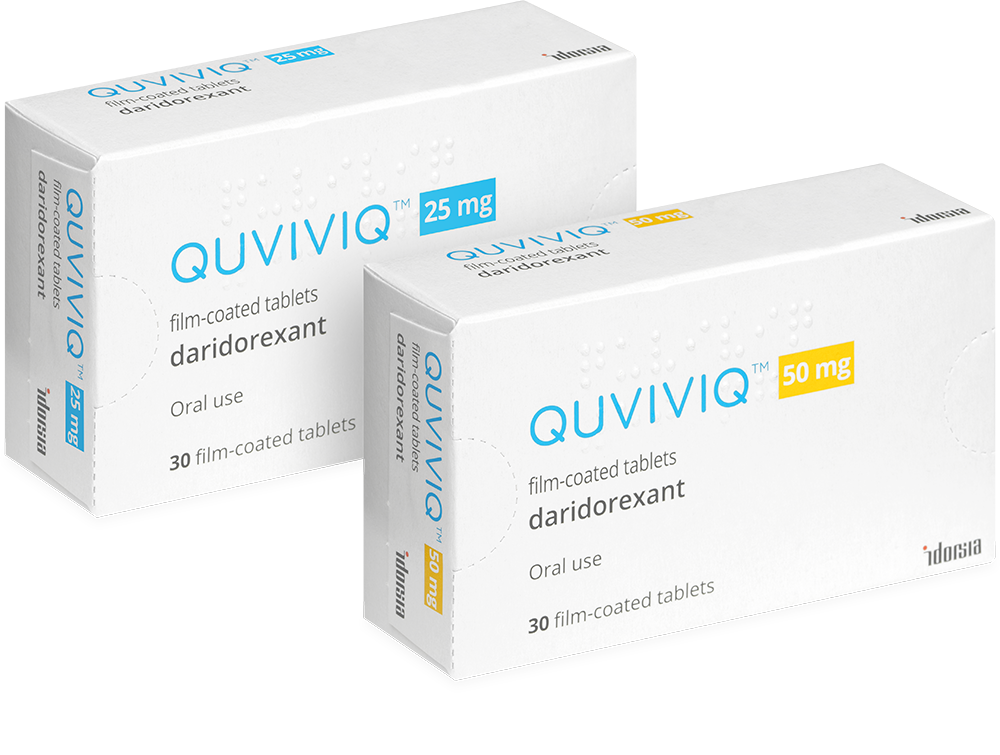

PRODUCT ANNOUNCEMENT
QUVIVIQ™▼(daridorexant)
50mg, 25mg tablets



PRODUCT ANNOUNCEMENT
QUVIVIQ™▼(daridorexant)
50mg, 25mg tablets
Promotional information from Idorsia Pharmaceuticals Ltd, developed in partnership with Haymarket Media Group. For UK healthcare professionals only. Prescribing information can be found at the top of this page and Adverse Events reporting can be found at the bottom of this page.
UK-DA-00132 | July 2024

Insomnia treatment targeting overactive wake signalling
Overactive wake signalling (hyperarousal) is thought to play an important part in the pathophysiology of insomnia.1 The wake-promoting neuropeptide orexin offers a different target to treat insomnia compared with existing hypnotics.2 Daridorexant (QUVIVIQ™) is a dual orexin receptor antagonist and works differently to sedating hypnotics. By selectively blocking the action of orexin, it reduces wake-drive and allows sleep to occur without altering the proportion of sleep stages.2,3
The below is a MIMS summary of the QUVIVIQ™ product characteristics. Please refer to the full Summary of Product Characteristics (SPCs) before prescribing.
QUVIVIQ™▼(daridorexant)
50mg, 25mg tablets
COMPANY
Idorsia Pharmaceuticals Ltd
LEGAL CATEGORY
POM
ACTIVE INGREDIENT
Daridorexant (as hydrochloride)
PRESENTATION
50mg light orange arc- triangle shaped f-c tab marked 50 and i, 30=£42.00.
25mg light purple arc- triangle shaped f-c tab marked 25 and i, 30=£42.00.
INDICATIONS
Insomnia in adults, characterised by symptoms present for ≥3 months and considerable impact on daytime functioning.
DOSAGE
Adult: One 50mg tab once daily 30 mins before bed. 25mg once daily may be appropriate for some patients; see PI and SPC. Reassess treatment need within 3 months and periodically thereafter. Treatment duration should be as short as possible.
Child: Not recommended.
CONTRAINDICATIONS
Hypersensitivity to the active ingredient or any excipients. Narcolepsy, severe hepatic impairment. Concomitant use with strong CYP3A4 inhibitors.
WARNINGS
Moderate hepatic impairment. Psychiatric disorders including depression, history of drug or alcohol abuse. Severe COPD. Risk of sleep paralysis, hypnagogic/hypnopompic hallucinations and cataplexy-like symptoms; warn patient. Elderly.
INTERACTIONS
CYP3A4 inhibitors (eg, itraconazole, macrolides, ciprofloxacin, ciclosporin, ritonavir, diltiazem, grapefruit juice), inducers (eg, efavirenz), or substrates (eg, high-dose simvastatin, tacrolimus), CNS depressants, alcohol, P-gp substrates (eg, digoxin, dabigatran).
PREGNANCY AND LACTATION
Pregnancy, no data; use only if required. Lactation, low excretion in breastmilk; discontinue breastfeeding or daridorexant.
ADVERSE EFFECTS
Headache, somnolence, dizziness, nausea, fatigue.

KEY POINTS
● Overactive wake signalling (hyperarousal) is thought to play an important part in the pathophysiology of chronic insomnia.1 The wake-promoting neuropeptide orexin offers a different target to treat insomnia compared with existing hypnotics.2
● Daridorexant (QUVIVIQ™) is a dual orexin receptor antagonist and works differently to sedating hypnotics. By selectively blocking the action of orexin, it reduces wake-drive and allows sleep to occur without altering the proportion of sleep stages.2,3
● In two randomised, double-blind phase III trials, adults with chronic insomnia (n=1854) were randomised to receive daridorexant 25mg or 50mg or placebo for 3 months. The primary endpoints in both studies were change from baseline in wake time after sleep onset (WASO) and latency to persistent sleep (LPS), measured by polysomnography, at months 1 and 3.4
● WASO and LPS were significantly reduced from baseline at months 1 and 3 among participants who received daridorexant 50mg daily compared with those given placebo; WASO was also significantly reduced from baseline in the daridorexant 25mg group compared with the placebo group at months 1 and 3.4
● The secondary endpoint of self-reported total sleep time was significantly increased from baseline at months 1 and 3 with daridorexant 50mg or 25mg compared with placebo.4
● Daytime functioning (also a secondary endpoint) was also significantly improved from baseline with daridorexant 50mg versus placebo at months 1 and 3. This was measured using the sleepiness domain score of the Insomnia Daytime Symptoms and Impacts Questionnaire (IDSIQ).4
● A 40-week extension study in patients who completed the phase III trials showed no evidence of abuse and no withdrawal symptoms indicative of physical dependence upon discontinuation of daridorexant after 12 months.5
● The most frequently reported adverse reactions seen with daridorexant were headache and somnolence. Somnolence was reported in 3% and 2% of patients treated with daridorexant 25mg and 50mg, respectively, compared with 2% of those who received placebo.3
● Daridorexant is recommended by NICE for treating insomnia in adults with symptoms lasting ≥3 nights per week for ≥3 months, where daytime functioning is considerably affected and cognitive behavioural therapy for insomnia has not worked, is unsuitable or is not available.6
REFERENCES
1. Riemann D et al. The hyperarousal model of insomnia: a review of the concept and its evidence. Sleep Med Rev 2010 14: 19–31.
2. Roch C et al. Nonclinical pharmacology of daridorexant: a new dual orexin receptor antagonist for the treatment of insomnia. Psychopharmacology 2021; 238: 2693–708.
3. QUVIVIQ Summaries of Product Characteristics, May 2024.
4. Mignot E et al. Safety and efficacy of daridorexant in patients with insomnia disorder: results from two multicentre, randomised, double-blind, placebo-controlled, phase 3 trials. Lancet Neurol 2022 21; 125–39.
5. Kunz D et al. Long-term safety and tolerability of daridorexant in patients with insomnia disorder. CNS Drugs 2023; 37: 93-106.
6. NICE technology appraisal TA922 (accessed July 2024).
For more information contact Idorsia Pharmaceuticals Ltd via idorsia.uk/contact or call: 0800 313 4925
For more information contact Idorsia Pharmaceuticals Ltd via idorsia.uk/contact or call: 0800 313 4925
Adverse events should be reported.
Healthcare professionals are asked to report any suspected adverse reactions via www.mhra.gov.uk/yellowcard or search for MHRA Yellow Card in Google play or Apple App store.
Adverse events should also be reported to ds.safety.uk@idorsia.com.
Adverse events should be reported.
Healthcare professionals are asked to report any suspected adverse reactions via www.mhra.gov.uk/yellowcard or search for MHRA Yellow Card in Google play or Apple App store.
Adverse events should also be reported to ds.safety.uk@idorsia.com.
